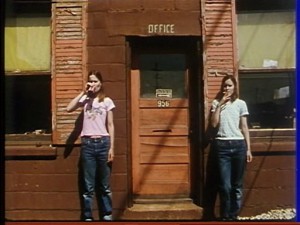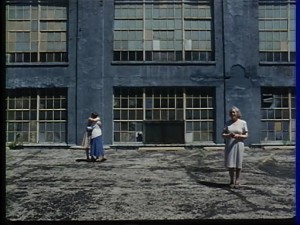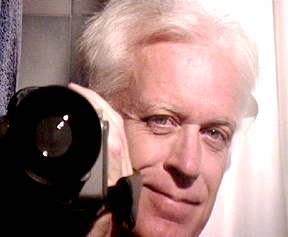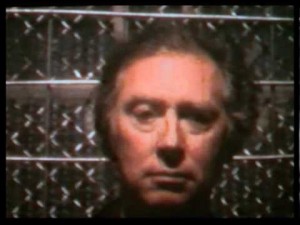From the Chicago Reader (April 13, 2007).
Both of these films, the more recent One Way Boogie Woogie 2012, and Benning’s earlier 11 X 14 are available in one two-disc DVD set from www.edition-filmmuseum.com/. — J.R.


Titled after Piet Mondrian’s painting Broadway Boogie Woogie, James Benning’s experimental masterpiece One Way Boogie Woogie (1977) consists of 60 one-minute takes shot with a stationary camera in an industrial valley near his native Milwaukee. The film strikes a graceful balance between abstraction (either found or created) and personal history, with ingenious uses of on- and offscreen sound, and it plays like a portfolio of 60 miniature films, each a suspenseful puzzle and a beautifully composed mechanism. A few years ago Benning returned to his hometown to fashion this shot-for-shot remake (2005), planting his camera in the same places and, whenever possible, using the same people. It screens on a double bill with the original, and though it’s not on the same level, it’s a poignant and fascinating companion piece. Sat 4/14, 7 PM, Univ. of Chicago Film Studies Center.

 Read more
Read more
From the Bard Observer, September 9, 1964. -– J.R.
What We Ate in That Year

A MOVEABLE FEAST, by Ernest Hemingway, Charles Scribner’s Sons, 211 pp., $4.95.
In the spring of that year, long after he was dead, a book of his was published and it was a good book. He had not written a good book for quite some time and the critics were beginning to worry. They had wanted to say something good about him now that he was dead, but there were no good books to say good things about except for those written twenty and thirty years ago, and they (the critics) had already spoken enough about the earlier ones anyway.
The new book was about Paris of long ago when he and his friends were writing the earlier books. In those days there was Miss Stein and Ezra Pound and Wyndham Lewis and Ford Maddox Ford and several others. Some were good and some were very good and others were not so good at all. He was not like the others because he was not a homosexual or an alcoholic and he did not have bad breath or look evil. Much of the time he would write, and during the times that he would not write he would walk the shaded avenues or go to the races. Read more
From American Film (September 1978). -– J.R.



Talking about avant-garde film these days raises a quandary. For one thing, no one can agree on precisely what the label means. Start by asking the proverbial man on the street what an avant-garde movie is. Chances are, if you don’t get insulted, the description that’s offered won’t exactly be a heartening one.
On the other hand, address your query to “an avant-garde filmmaker,” and you’re just as likely to get a moralistic distinction between art and commerce — or between art and entertainment calculated to shrivel your own sense of seriousness to the size of a pea.
The fact that there are such disagreements about simple definitions only helps to keep the term loaded and half-cocked. A Cuban director at a film festival once allegedly shunned an American director’s gesture of friendship by saying, “I only talk to people with guns. My film is a gun; your film isn’t. ” In analogous fashion, the mere concept of avant-garde film is often used as a gun by friends and foes alike. This scares off countless spectators who fall in between these categories — less committed souls who understandably run for cover as soon as any shots are fired. Read more








